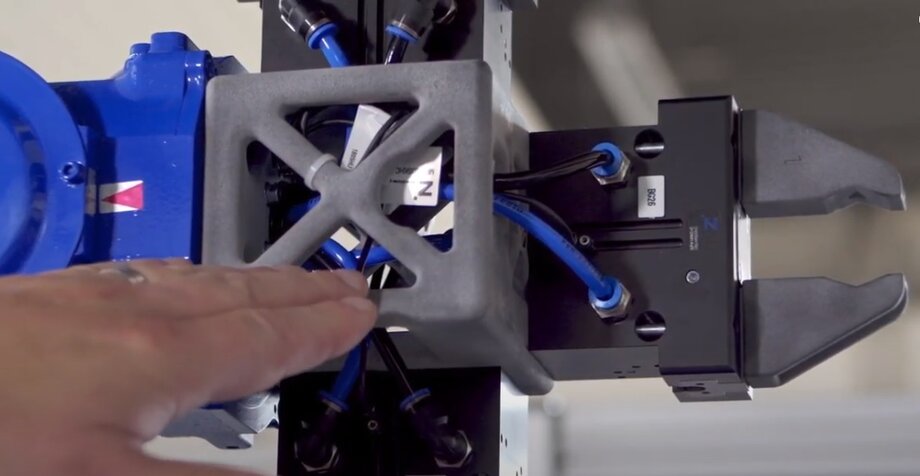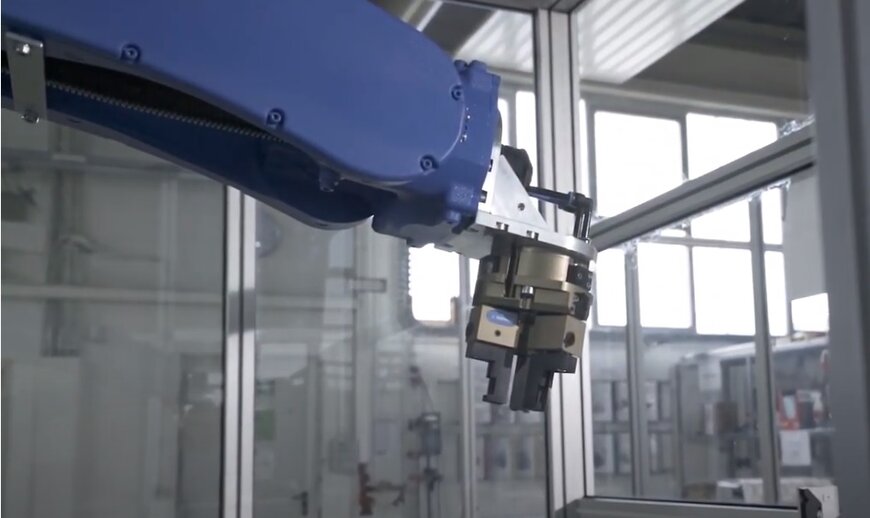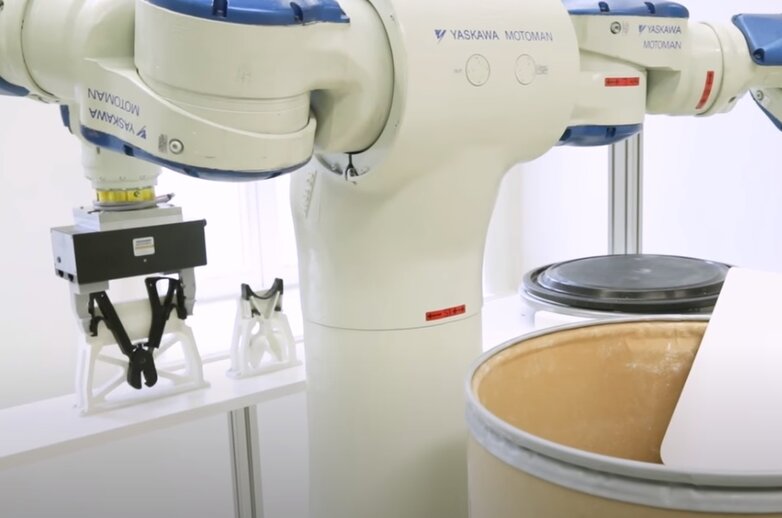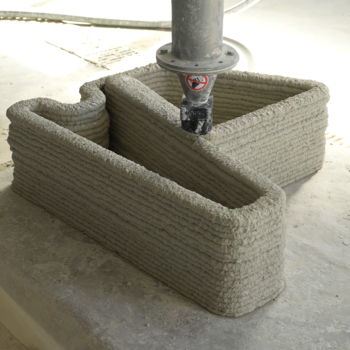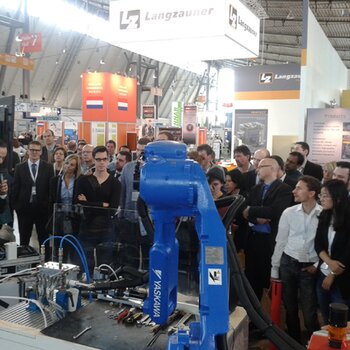Additive Manufacturing
Yaskawa Slovenia Študije primerov Aplikacije Additive Manufacturing
Pregled
Motoman Robots for Additive Manufacturing - 3D Printing, Laser Cladding, WAAM (Wire-Arc Additive Manufacturing) and Decoration
Additive Manufacturing is a technology that promises to reduce part cost by reducing material wastage and time to market. Furthermore, AM can also enable an increase in design freedom, which potentially results in weight saving as well as facilitating the manufacture of complex assemblies formerly made of many subcomponents.
3D Printing with Motoman Robots
Automation around 3D Printing Machines
More and more, Motoman Robots are used to automate processes around 3D Printers to enable unmanned operation for hours. This can be handling of printed parts in multi-machine installations (unloading 3D Printing Machines), separation of parts after a multiple part printing cycle, powder management (refill/removal), cleaning jobs by removing the granulates, part finshing (Deburring, Cutting), Quality Inspection and Packaging/Transport/Logistics. Our MotoMini, the smaller GP Series Robots GP7, GP8, GP12 or our collaborative HC10 robot models are most popular here.
Robots directly moving a 3D Printer Extrusion Head
For larger workpieces, industrial robots can provide a long reach. In combination with external axis devices like swivelling or rotating bases, positioners, linear tracks or gantries, they provide unbeatable working space. With such a Robotic 3D printer, spatial free-form structures become possible that require little or no support structures ("Free Space Fabrication" / FSF).
Apart from classical rapid prototyping, we see an increasing share of real manufacturing applications such as:
- Large volume free-form parts, mould forms, prototypes of any size and kind,, 3D shaped truss constructions like exhibition display walls
- large-format hybrid parts, by applying materials to already existing free-form surfaces.
Due to their excellent path performance, their rigid mechanical structure and the high dust protection (IP) ratings, combined with the advanced anti-vibration control and the multi-axis capability, MOTOMAN Handling Robots are a perfect choice for 3D printing.
Programming of 3D Printing Applications - Slicing
In most 3D Printing cases, CAD Data of the workpiece is available. Post processor modules of a CAD/CAM Offline Programming Software slice 3D CAD models into 2D layers preparing the additive printing process, and generate a robot program automatically. You will find Motoman Robots registered in the libraries of all common 3rd-Party CAD/CAM Software tools available on the market.
However, for rather simple structures, or cases where CAD Data is not available or cannot be generated easily by scanning originals, classical teach-in robot programming can be reasonable.
YASKAWA Motoman Robots offer excellent interfaces to to dosing devices to synchronize the dosing volume with the robot TCP speed.
CAD/CAM path generation of 3D free form slices
When it comes to really 3D free form slicing of parts for robotic applications (not just into 2D planar layers), CAD/CAM software is still a tricky challenge somewhere between R&D and commercial availability. Such software must be capable to generate curved, multi-axis tool paths directly from the CAD system, considering the singularities in the robot control or collisions with objects already built.
Research institutes and CAD/CAM software companies all over the world prefer using Motoman robots in their R&D studies, due to their excellent mechanical structure and open and rich interfacing options.
Wire Arc Additive Manufacturing (WAAM) with Motoman Robots
From the standpoint of an arc welding robot supplier YASKAWA Motoman, Wire Arc Additive Manufacturing (WAAM) is an absolutely interesting application, as it uses off-the-shelf and low-cost arc welding technology. With WAAM, a metal wire is melted at the right place using a MIG or CMT welding torch to form the desired blank and to build up components in layers.
A wide variety of materials, such as common mild steel, stainless steel, aluminum, titanium and nickel-based metals are perfectly suitable for the robotic WAAM process. Typical workpieces includes airplane, marine and power generator parts, impellers for machines and car-body prototypes for automotive. Apart from building components purely additively, robotic post-production steps such as polishing and/or machining are possible.
Laser Cladding with Motoman Robots
Laser cladding is an additive manufacturing process which is depositing metallic powders into a focused laser beam. As a result, these powders are directly melted and solidified on the part surface to form stacked layers. It is used to improve mechanical properties or corrosive resistance, or to fabricate metal matrix composites. The technology is also used to manufacture prototypes and small batches of metal components.
Another application for Laser Cladding is repairing metal parts after wear stress.
Cladding and Decoration with Motoman Robots
Cladding is building 3-dimensional layer of adhesive material for decoration. This application could be classified as an Additive Manufacturing Process or as a Dispensing Application.
3D Printed Grippers and Fixtures for Robots
3D printing is also common for robotic grippers, allowing desirable weight and space optimization of gripper fingers and housings. 3D printed fixtures are perfect in the commissioning phase where permanent changes are done until the workpiece is perfectly fitting into the fixture.




















